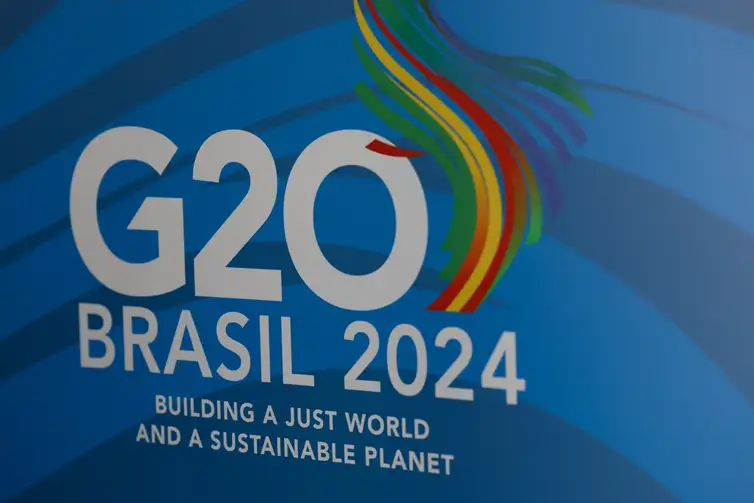Oil Market Fluctuations Amid Geopolitical Tensions
Oil prices experienced intrigue and fluctuation this week as geopolitical tensions and economic indicators sent mixed signals to investors.
Published May 07, 2024 - 00:05am

Image recovered from elkhabar.com
Oil prices have seen an uptick during Monday's trading, attempting to recover from last week's losses, fueled by the prospect of supply disruptions due to geopolitical tensions.
This price trajectory comes in the wake of Saudi Aramco's announcement to increase the official selling prices (OSPs) of Saudi crude for the upcoming month of June across most regions. Adding to market worries is the scant likelihood of reaching a ceasefire in the Gaza conflict, raising fears that the strife could broaden in pivotal oil-producing areas.
On one hand, Brent crude futures made modest gains of 0.41% to reach $83.30 a barrel, while West Texas Intermediate rose by 0.45% to $78.46 a barrel. On the other hand, oil prices have exhibited stability, with Brent futures climbing $0.37 or 0.5% to $83.33 a barrel, and West Texas Intermediate also ascending by the same percentage, marking $78.48 a barrel.
The market also processed last week's largest quarterly losses for both Brent and West Texas Intermediate. Analysts are pondering over the weak U.S. employment data and the Federal Reserve's timing for the anticipated interest rate cuts.
Market dynamics have been heavily influenced by Saudi Arabia's decision to hike OSPs which is a reflection of robust summer demand anticipations. This economic play juxtaposes the geopolitical uncertainties where the lack of ceasefire agreements hint at potential escalations that could tighten supply strains.
Compounding the market's uneasiness are preparations for possible new attacks in the Middle East, as diplomatic efforts to quell hostilities continue to dampen. The ongoing discussions aimed at de-escalating the turmoil in Gaza have had a significant impact on oil risk premiums, signaling an urgency for investors to calculate the geopolitical stakes involved.
Looking at the U.S., the count of operational oil and natural gas rigs has seen a remarkable decrease for two consecutive weeks, indicating potential supply contractions, thereby offering support to oil prices.
The nuanced increase in oil prices on Monday is not just a knee-jerk reaction to the prevailing geopolitical tensions but also an adjustment to a complex array of factors influencing the global oil markets. Investor sentiment has been swayed by both the prospect of supply disruptions and the broader market implications of geopolitical strife, particularly in regions central to oil production.
An important factor in the rising oil prices is the tension observed between major world powers, which casts a shadow of unpredictability over the stability of oil-producing regions. These tensions are not only localized but also have the potential to affect global alliances and trade agreements. Investors remain on the edge as any further exacerbation could directly threaten the oil supply chain and lead to increased prices.
In addition to geopolitical factors, the oil market is also responding to other economic indicators. The U.S. employment data weakened the dollar, making crude cheaper for holders of other currencies, which likely contributed to the oil price recovery. However, market analysts remain cautious, as the potential shift in U.S. monetary policy could reverse recent trends, ushering in a period of uncertainty for global commodities like oil.
Another aspect impacting global oil prices is the potential return of Iranian crude to the market. Nuclear deal talks, which could end U.S. sanctions on Iran's oil exports, have seen multiple roadblocks, contributing to the uncertainty. The eventual return of Iranian oil would introduce a significant amount of supply to the market, potentially dampening the bullish sentiment that contributed to Monday's uptick in prices.
Environmental policies and the shift towards renewable energy are also playing their part. While the immediate effect on oil prices is not overt, the long-term outlook sees a decrease in oil dependency. Countries and companies are investing more in alternative energy sources, which is expected to alter future demand projections for oil, albeit gradually.
Oil traders also await the upcoming meetings of the Organization of Petroleum Exporting Countries and their allies, collectively known as OPEC+, which will discuss output policies. Such meetings are crucial, as decisions made by OPEC+ can either flood the market with excess oil or hold back production to maintain price levels. The anticipation of these meetings often leads to speculative trading, influencing price volatility.
Moreover, the effect of the COVID-19 pandemic continues to loom over global oil demand. Despite the relaxation of some restrictions, many countries are still battling waves of infections, leading to renewed travel curbs and lockdowns that can rapidly change consumption patterns and thus oil demand.
In summary, the modest but steady recovery in oil prices has been shaped by a tangle of geopolitical tensions, economic data, and anticipations rooted in both policy developments and international relations. As these multiple dimensions interact, the market remains sensitive to any further disruptions, signifying the intricate interdependence of global events and the oil industry. Market observers are keenly monitoring these developments, assessing their impact on the sustained profitability and stability of the oil market.
While one week's positive movement in oil prices provides some relief to energy producers, it also serves as a reminder of the inherent volatility in this vital global market. Investors and policymakers alike are advised to stay vigilant, ready to navigate the choppy waters that can arise from sudden geopolitical developments or unexpected shifts in market fundamentals.








